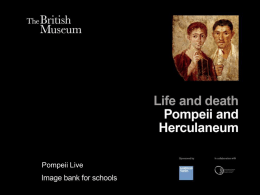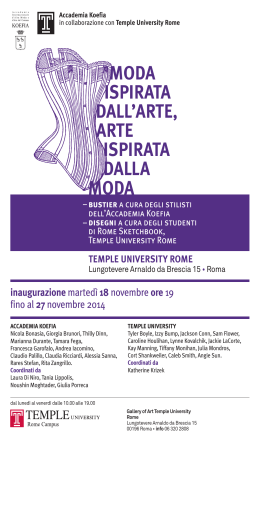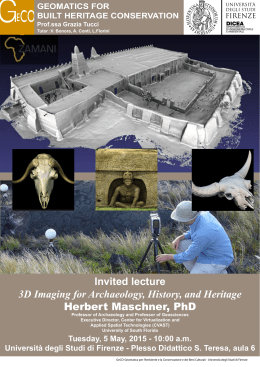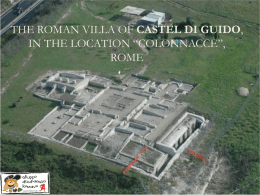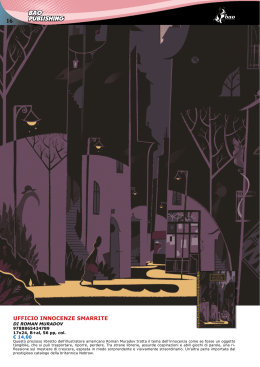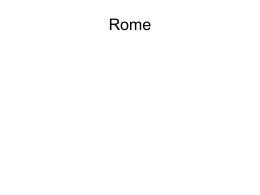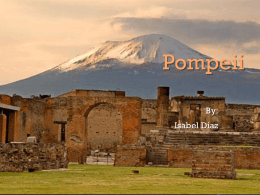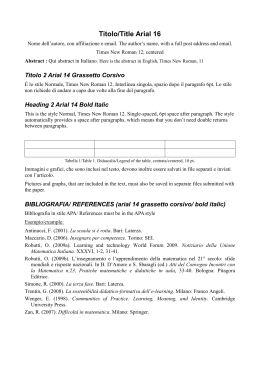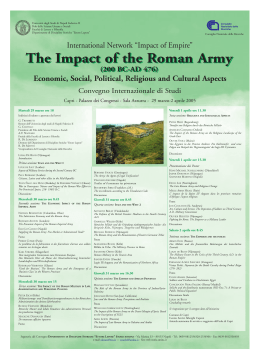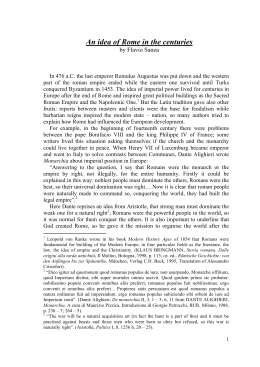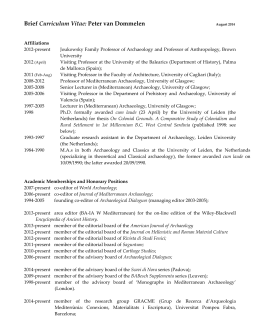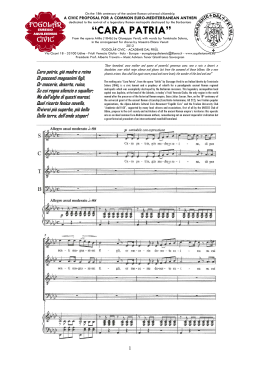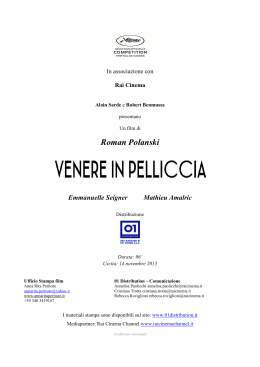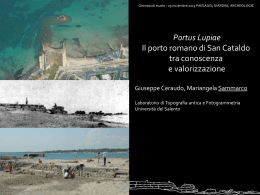This conference addresses one of the most important new directions in classical archaeology – an increasing attention to human environments. The evidence of plant, faunal and skeletal data provide the possibility of a fuller understanding of the ancient world – of agricultural techniques, diet, health and disease and environmental change. Through the more intensive collection and analysis of biological data, classical archaeology is transforming from a discipline concerned principally with great monuments to a richer consideration of the relationship between humans and their many environments. The conference assembles an international group of specialists – faunal and human skeletal specialists, archaeobotanists and historians. Major excavations from around the Roman world will be presented in the light of new biological data, with teams of specialists from each site asked to present the whole of their collections, highlighting places where different kinds of evidence yield similar – and divergent – histories. Each team will be further asked to situate their findings in historical context – both of their site and more broadly. Keynote summaries will be offered by archaeologists and historians, reflecting on the significance of individual findings for the field as a whole. Diet and Environment in the Roman World Sponsored by the Soprintendenza Speciale per i Beni Archeologici di Roma, the American Academy in Rome, l’École française de Rome, the Escuela Española de Historia y Arqueología en Roma 12-14 November, 2014 Museo Nazionale Romano alle Terme di Diocleziano Viale Enrico De Nicola, 79 00185 Roma Wednesday, Nov. 12: Thursday, Nov. 13: Friday, Nov. 14: AM (9:00-11:30) State of the Field Summaries AM (9:00-12:00) Team Site Presentations 9:30-10:00 Marijke Van der Veen, Plants as Archives of Human Behaviour 10:15-10:45 Luca Bondioli, Cosa narrano le ossa ed i denti 11-11:30 Michael MacKinnon, Zooarchaeology and Roman Archaeology: Trekking a Course Forward 9:30 Pompeii: Temple of Fortuna Augusta [ Véronique Zech-Matterne, Le temple de Fortune Auguste et ses annexes (Pompéi, Campanie): étude des restes végétaux associés aux niveaux de fondation et de fonctionnement d’un lieu de culte | Tarek Oueslati, Faunal remains from the Annex of the Fortuna Augusta Temple, Pompeii 10:30 Pompeii: Porta Stabia | Mark Robinson and Michael MacKinnon, Complexity and context in the Diet and Environment of a Pompeian neighborhood 11:30 Erica Rowan and Mark Robinson, Evidence for Diet at Herculaneum AM (10:00-12:00) Environmental Archaeology in Rome Tavola rotonda 11:45-12:15 Coffee Break 12:15-12:45 Response, William Harris 1pm Break PM (2:30-5:30pm) Team Site Presentations 12:30 pm Break 2:30 Emanuele Papi, Il caso di Thamusida (Marocco) PM (2:30-4:30) 3:30 John Marston, Archaeological perspectives on Team Site Presentations desert adaptation in the Roman Fayum, Egypt 4:30 Dominique Castex, Cimitero di Ss. Pietro e Marcellino, Roma 2:30 Portus | Tamsin O’Connell and Simon Keay, 6:00 pm Reception Foodwebs and commerce at Portus, the maritime port of Imperial Rome 3:30 Paloma García-Díaz , Almudena Orejas, Leonor Peña-Chocarro, The Fábrica de Tabacos in Gijón (Asturias. Spain): the geoarchaeological and archaeobiological record 4:30-5pm Coffee Break 5pm Key Note Lecture | Peter Garnsey, Climate, Crops and the Costs of Urbanization in the Roman World Maria Rosaria Barbera, Paola Catalano, Alessandra Celant, Ernesto De Carolis, Jacopo De Grossi Mazzorin, Francesco di Gennaro, Claudia Minniti, Renato Matteucci, Clementina Panella, Carlo Rosa, Laura Sadori, Renato Sebastiani. Moderator: Massimo Osanna
Scarica
